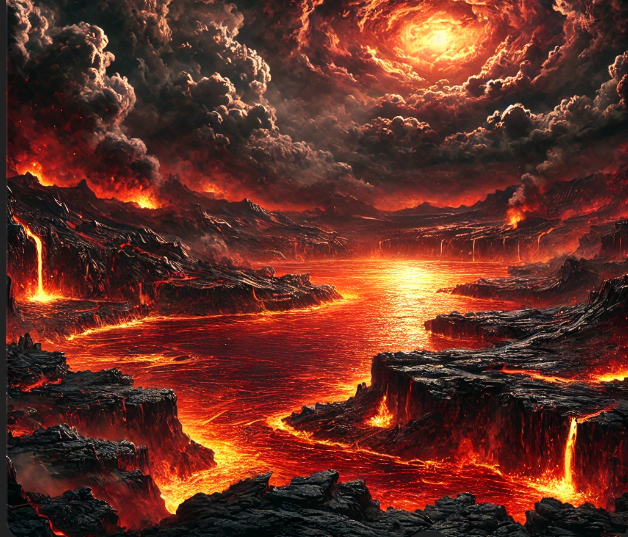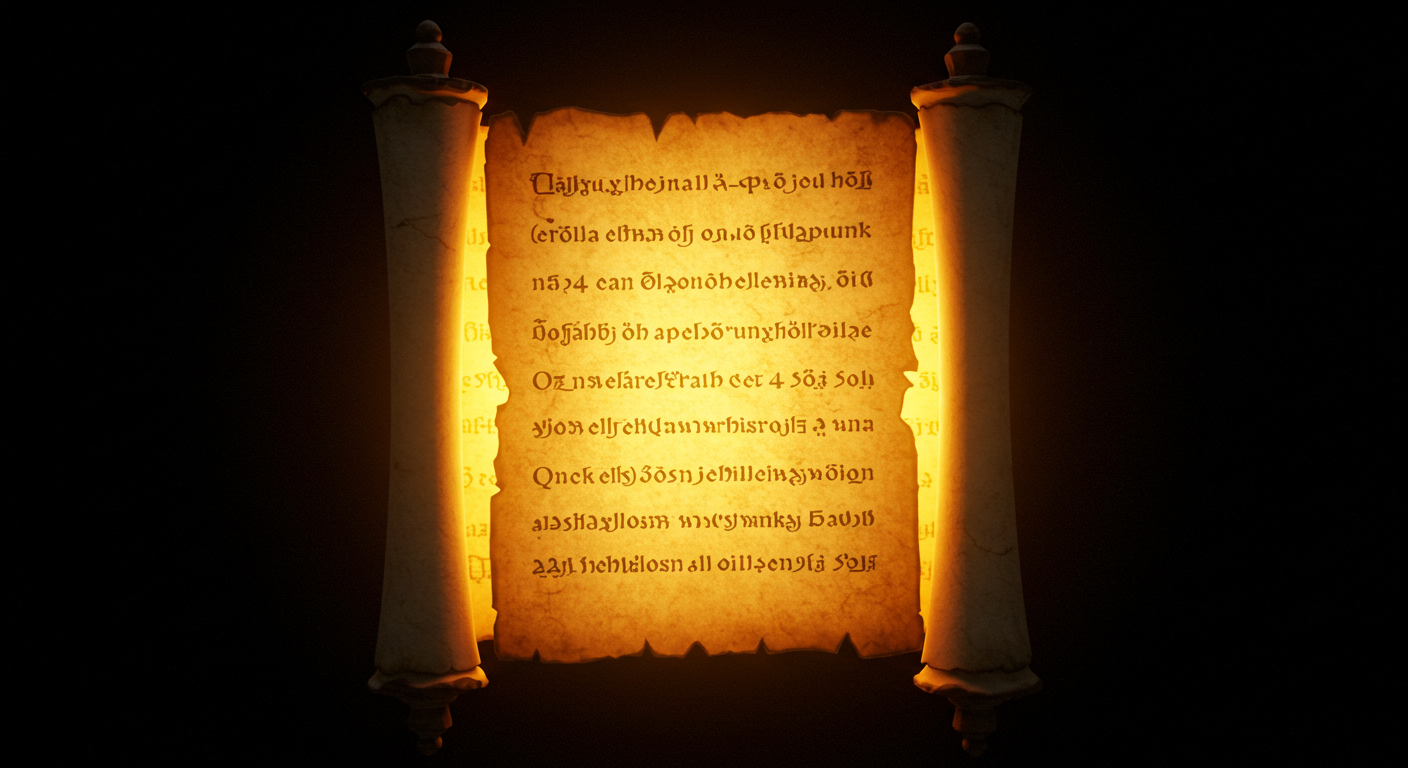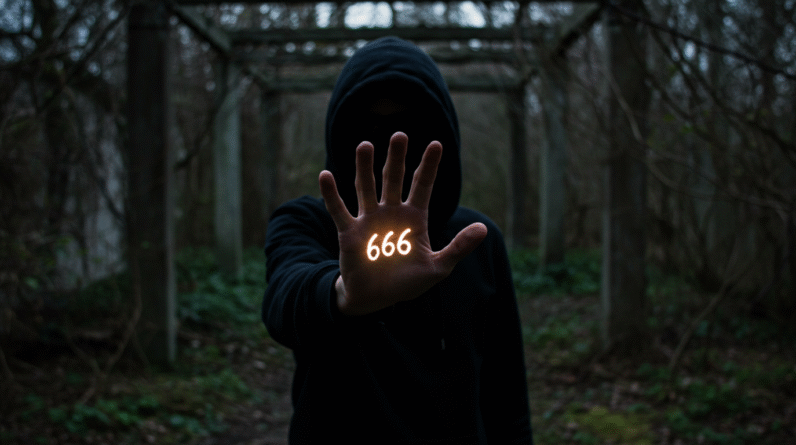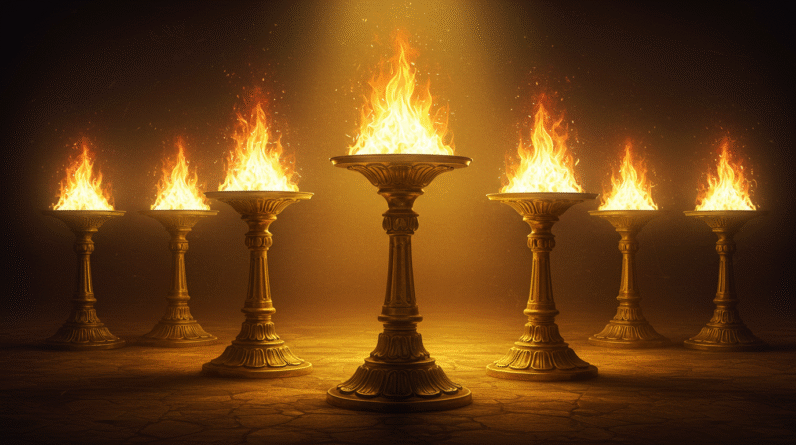Explore divine justice and hope in Revelation 20:10. Delve into the imagery of evil’s end, offering spiritual insights and timeless lessons for today’s believers.
The Fiery Lake Of Sulfur: The Final Destination Of Evil — Revelation 20:10
Bible Verse: Revelation 20:10
Introduction: Setting the Scene
As we dive into the vivid imagery of Revelation, one picture that stands out starkly is that of the fiery lake of sulfur—a place not just of raw punishment, but of finality. Revelation 20:10 reveals this ominous destination as the ultimate resting place of evil. It’s here that the devil, once the accuser and tempter, meets his ultimate fate, alongside the beast and the false prophet. This imagery isn’t just about the end—it’s about justice fulfilled and evil defeated.
You might wonder, “Why does this vision matter today?” Understanding this imagery helps us reflect on the gravity of justice within God’s narrative, the resolute end of malevolence, and how these ancient words sculpt our faith journeys. They serve as a backdrop, enhancing our appreciation of divine justice and hope in God’s plan for creation. This glimpse into Revelation’s motifs provides you with a broader spiritual perspective, grounding us in a narrative that champions love, righteousness, and ultimate victory over darkness.
Exploring the Vision in Depth
Summary of Key Symbols
Revelation paints its messages with powerful symbols and unforgettable characters. In this vision, the fiery lake of sulfur symbolizes eternal destruction and the ultimate obliteration of evil. It is not merely a physical place, but a metaphysical concept representing complete divine judgment. The lake is a culmination point—a symbol of irreversible separation from everything holy and just.
The dragon, a figure of chaos and corruption, represents Satan himself—the architect of deceit and rebellion against divine order. The beast and the false prophet symbolize systems of worldly power and deception used to lead humanity astray. Together, these figures capture the essence of spiritual defiance and the persistent challenge to divine sovereignty.
Contextual Background
To grasp the magnitude of this prophetic vision, it’s helpful to zoom out and consider its historical and theological echoes. Revelation, apocalyptic in nature, was written during a time when Christians faced severe persecution. In this context, images of God’s ultimate triumph would have provided immense comfort and hope to early believers.
The notion of an eternal lake filled with sulfur can be traced back through biblical texts as a symbol of divine wrath and purification. The fire here serves both as punishment and as a significant moral boundary, reminding us that God’s justice extends beyond our immediate understanding. By connecting this to past biblical accounts of divine judgment—such as the destruction of Sodom and Gomorrah—the passage harnesses powerful imagery to convey its message of eventual justice.

Interpretation
What does this all mean, then, for our understanding of the end-times narrative in Revelation? Interpretations vary, but a consistent theme emerges the certainty of God’s judgment against evil. The fiery lake isn’t just about fear, but about hope; a promise that wrongdoing will not endure, and righteousness will see vindication. It speaks to the definitive affirmation of good over evil, of God’s ultimate authority in the face of chaos.
This part of Revelation also highlights the tension between temporal suffering and eternal justice. Believers are invited to look beyond immediate trials to the promised restoration and renewal brought about by God’s triumph. It’s about enduring faith, holding onto hope amid trials, and standing firm with the assurance that divine justice prevails.
Relevance for Today’s Readers
Spiritual Insight
The vision of the fiery lake in Revelation 20 offers profound spiritual lessons for today. It beckons you to consider the weight of moral choices and the certainties that underpin faith. Trust, endurance, and hope emerge as recurring themes, encouraging believers to navigate life’s complexities with a heart grounded in divine promises.
This vision is a clarion call to vigilance, urging you to decipher the spiritual battles cloaked within your everyday experiences. It reassures you of divine protection and reinforces trust in God’s righteous plan. In a world where moral lines often blur, this ancient text invites you to discern what truly holds eternal value.
Application in Daily Life
How then, can you apply this vision of judgment and hope in your daily life? It is, after all, not merely about a distant future but about how you inhabit each day. Start by examining your moral compass—consider how your decisions align with a broader spiritual narrative. In much the same way you’d plan a journey around landmarks, use the eternal truths of Revelation to chart your course.
Reflect on the battles you face, whether internal struggles or external turmoil. Remain steadfast, knowing that while temporal pain and injustice exist, they do not define the final word. This vision empowers you to live with intention, drawing strength from God’s ultimate victory over evil and chaos.
Supporting Verses and Cross-References
It’s useful to explore supporting biblical texts that amplify the themes presented in Revelation 20. Consider Ephesians 6:12, which highlights the spiritual warfare that believers encounter. “For our struggle is not against flesh and blood but against… spiritual forces of evil.” This verse, among others, underlines the ongoing reality of conflict described in Revelation, offering a framework within which to understand personal and collective spiritual struggles.
Likewise, Revelation 21:4 provides comfort in the aftermath of judgment, promising that “He will wipe every tear from their eyes. There will be no more death or mourning or crying or pain.” This verse complements the notion of divine justice and offers hope beyond the fiery judgment, assuring you of God’s tender care and restorative intentions.
Conclusion: Reflection on the Vision’s Message
At its core, the vision of the fiery lake of sulfur in Revelation 20:10 is a dramatic representation of God’s ultimate victory and the assured downfall of evil. It invites you to reflect on themes of justice, endurance, and hope, reminding you of the broader spiritual journey you’re a part of. It encourages you to walk confidently in faith, knowing that evil does not have the final say.
In moments of trial, let this vision inspire you to stand firm, emboldened by the promise of divine justice and protection. It’s a call to deepen your faith, to knit together the strands of doubt and hope into a rich tapestry of belief. As you meditate on this vision, consider other parts of Scripture, seeking further clarity and wisdom.
May you be inspired in your personal walk of faith, aware that, like the words of the Apostle John, your journey unfolds under the steadfast gaze of a loving and just Creator. In the end, let Revelation’s promise of triumph assure you, offering an anchor in the stormy seas of life.







